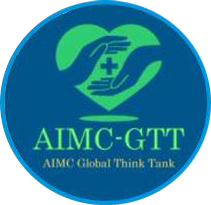Identification of the site of origin for ‘malignancy with unknown primary’ remains a challenge for modern pathology. Correct diagnosis is critical to defining the most beneficial treatment for the patient. Standard pathological approaches combine morphology and immunohistochemical (IHC) studies to first subclassify cytokeratin-positive carcinomas into adenocarcinoma, squamous cell carcinoma, neuroendocrine carcinoma, and urothelial carcinoma. Subsequently, organ-specific IHC-markers, if available, are used to assign the tumor’s primary site of origin. Previous gene expression classifiers have shown promise in tumor classification but cannot readily be integrated into standard practice because they ignore the algorithmic hierarchy used by pathologists. Here we present a novel hybrid approach integrating a hierarchy of gene expression classifiers into the algorithmic method used with IHC. In this method, a tumor is initially assigned to one of the carcinoma subclasses by the top tier classifier. Dependent on initial classification, one of three second-tier classifiers assign primary site resulting in both carcinoma subtype and primary site classification. First tier classifier accuracies were 89%, 88%, and 75% for cross-validation, independent, and institutional independent test sets, respectively. Second tier accuracies were 87%, 90%, and 87% for adenocarcinoma, squamous, and neuroendocrine carcinoma respectively. Therefore, we can successfully separate the four main subtypes of carcinoma and subsequently assign primary site by incorporation of gene expression–based classifiers into the standard algorithmic pathology approach. (J Mol Diagn 2010, 12:476–486; DOI: 10.2353/jmoldx.2010.090197)
Identifying site of primary origin for carcinoma of unknown primary remains a challenge for the pathologist, even with modern pathological techniques. This carries serious implications for cancer therapy, as current oncological therapeutic regimens are targeted to site of origin. Microarray-based gene expression studies are one potential technological solution to this problem, and the feasibility of this methodology for broad-based tumor classification has been established by a number of studies. 1–7 Approaches based entirely on gene expression data, however, limit these studies because they do not
take into account well-understood differences in morphology and biological differentiation. Pathologists recognize and exploit these differences in their daily practice. Assessment of morphological features using routine hematoxylin and eosin stains is the first, and many times the last, step in pathological tumor classification, as many malignant neoplasms may be classified with morphology alone. Immunohistochemistry is often part of an algorithmic approach that first separates malignancies into general classes: hematolymphoid, carcinomas, mesothelioma, melanoma, CNS primaries, germ cell neoplasms, and sarcomas. Specific subtypes within each category, except for melanoma and mesothelioma, may be further refined with the use of specific markers. The first key breakpoint is the distinction of hematolymphoid or liquid malignancies from solid malignancies. The next breakpoint
is distinguishing among the solid malignancies. Identification of cytokeratin expression is a key component of this algorithm, as it will delineate carcinomas, the most frequent type of adult malignancy. Mesothelioma and some germ cell tumors also express cytokeratins. Further immunohistochemical studies will separate mesothelioma and germ cell tumor from carcinomas (Figure 1). Carcinomas are then further subtyped into squamous cell carcinoma, adenocarcinoma, neuroendocrine carcinoma; and urothelial carcinoma; these may then be refined by site of origin (Figure 2). Although the current antibody panels are relatively effective at distinguishing among these various forms of carcinoma, there remain many instances in which the carcinoma type is not determined with objective certainty.
Supported by the National Institutes of Health, National Cancer Institute
grant RO1 CA112215 (to T.J.Y.).
B.A.C. and G.B. contributed equally to this study.
Accepted for publication February 22, 2010.
Address reprint requests to Timothy J. Yeatman, M.D., Moffitt Cancer
Center, 12902 Magnolia Drive, Tampa, FL 33612-9497. E-mail: timothy.
yeatman@ moffitt.org.
